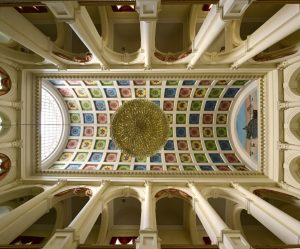
Rohtas fort, The King of all forts
October 26, 2021
Khanpur Dam, an ideal spot for summer sports
October 26, 2021 Noor Mahal is a magnificent piece of Muslim architecture, built by the fourth Nawab of Bahawalpur, Nawab Sadiq Muhammad for his beloved wife, but she refused to live in the palace due to proximity to a graveyard. Nawab Sadiq Muhammad is also known as “Shah Jahan of Bahawalpur”, because of his love for constructing a grand building there. The palace was used as a state guest house, a major meeting was held in this palace, and the court was used by Nawab to address his courtiers.
Noor Mahal is a magnificent piece of Muslim architecture, built by the fourth Nawab of Bahawalpur, Nawab Sadiq Muhammad for his beloved wife, but she refused to live in the palace due to proximity to a graveyard. Nawab Sadiq Muhammad is also known as “Shah Jahan of Bahawalpur”, because of his love for constructing a grand building there. The palace was used as a state guest house, a major meeting was held in this palace, and the court was used by Nawab to address his courtiers.
Noor Mahal was built in an Italian construction style by a British Engineer named Heenan in 1875 for Rs1.2 million, which is evident from its exquisite architecture as well as having a beautiful decor of ornate furniture, curtains of heavy brocade with pelmets, carpets, and crystal chandeliers while stunning paintings and artwork adorn the walls. It has a huge lush green garden with fountains and almost covers an area of 44600 sq. with 32 rooms out of which 14 are in the basement, 6 verandas, and 5 domes. In 1906, Nawab Bahawal Khan, a later ruler of the state of Bahawalpur, renovated the palace and also added a mosque to the palace.
After the partition when Bahawalpur became part of Pakistan, the Auqaf Department under the Antiquities Act of 1975 took over the palace. The palace was given on lease to Pakistan’s army in 1971whereas in 1997, the Pakistan army bought the palace, which then spent two years restoring it to its former grandeur. Later on, the palace was a guest house, Garrison club, and for holding meetings of dignitaries.
In 2001, Pakistan Archeological Department acknowledged it among protected monuments. It was used as a set for various dramas as well. Pakistan is a privilege to have a gem of a palace such as Noor Mahal to be part of our cultural heritage, a magnificent landmark to be visited by foreigners as well as ourselves.
